This is called a Gudgeon, it attaches to the wooden rudder and attaches through the hole to the pintle.
Brought in by Toby Burnham Aboard The Jupiter II
To get an idea where this would reside on a Schooner or Brig check out our friend Tugster‘s Post here-
Most Restless
Vessel designer Gerald de Weerdt here takes measurements today to attach rudder to hull via pintles and gudgeons.

and this from-
ARCHAEHISTORIA
WWII Historian and Shipwreck Researcher
http://www.archaehistoria.org/new-zealand-sites/32-union
The 158 ton brig Union would have been very similar to this one. This is the 162 ton, 90 feet long, wooden brig Annie Brown, which trading around South Australia from 1875. Source: p. 136 of “Sail in the South” by Ronald Parsons, Wellington, AH & Aw Reed, 1975
A bronze pintle with three through bolts from the 1823 wreck of the 432 ton sailing ship Brampton. The item was recovered by Kelly Tarlton from the wreck site in the Bay of Islands. This item was sold at Webb’s auction no. 862 in November 2002. Note as photographed the pintle is upside down. The Waimahana Bay trademe pintle did not have through bolts but was fastened by rudder nails and lag bolts instead.
More Reading about Gudgeon and Pintles- whats interesting here is this one from
http://home.vicnet.net.au/~maav/maid.htm

 |
| A Snow Brig. The Mountain Maid was a strongly built wooden snow brig. She had two square rigged masts and a smaller sail called a spanker, behind the main mast. (Based on a line drawing from Ships Rigs & Rigging, H. A. Underhill. Nautical Press, Glasgow. Colorised by EFL.) |
So I contacted my friend Will (Tugster) and he had a more intriguing information and photos to add to this-
Hi Joey–
Wow! My filing system works, and I located these photos about 5 minutes after I started looking.
The story is this: after a storm in spring (?) 1988, Mike Magnifico–then manager of Salisbury Beach State Reservation/Beach saw this as he was surveying beach erosion. He thought–he said later–those were gold, and the color is not exactly true in the photos. He called the Newburyport Maritime Museum, who called me, because I was Mr. Shipwreck before I was Tugster. I wet to Salisbury Beach, took the photos. A friend is standing in photo 1 to show scale.
I pursued it a while; a maritime archeologist up at Plymouth State (NH) looked it over carefully and declared the pintles made of “yellow metal” but further identification would likely not be possible. Last I knew, almost 30 years ago, Salisbury Beach Reservation kept them rather than donate to the N Maritime Museum.
Exciting. Feel free to post on GMG any text and photos.
Cheers
When you coming down to NYC?
Will
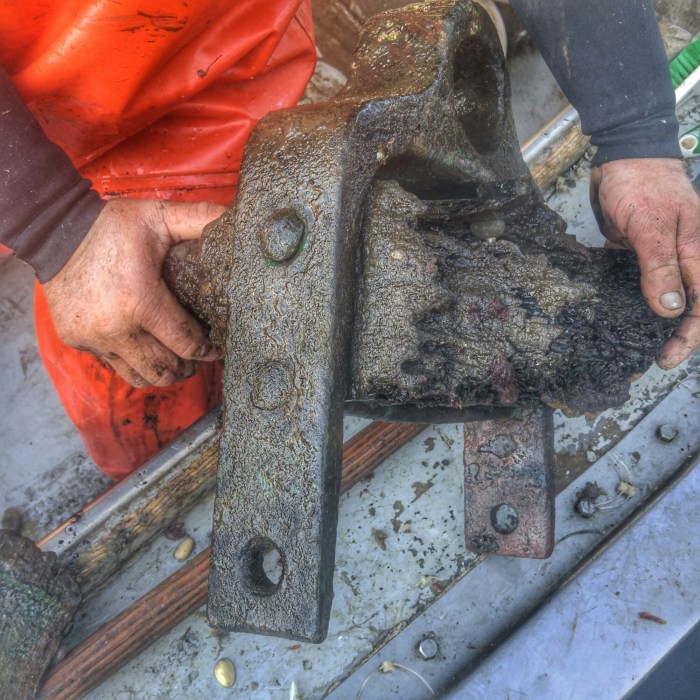
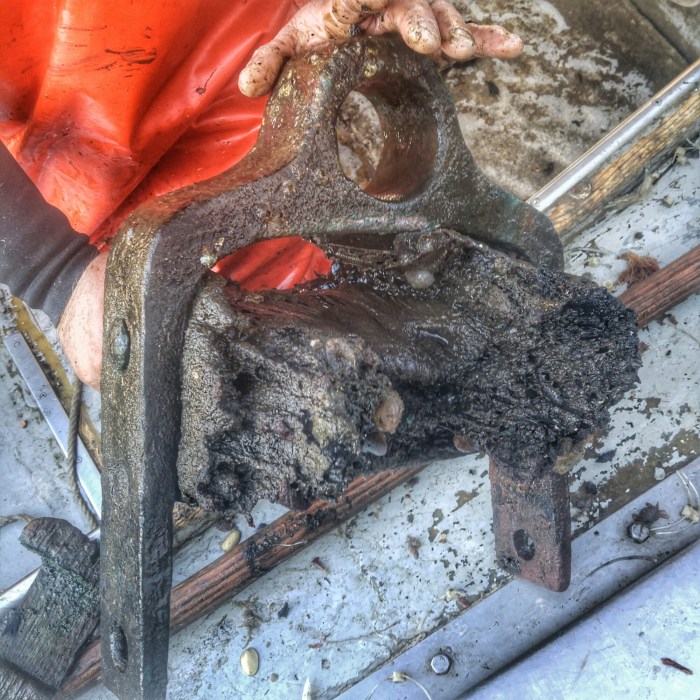
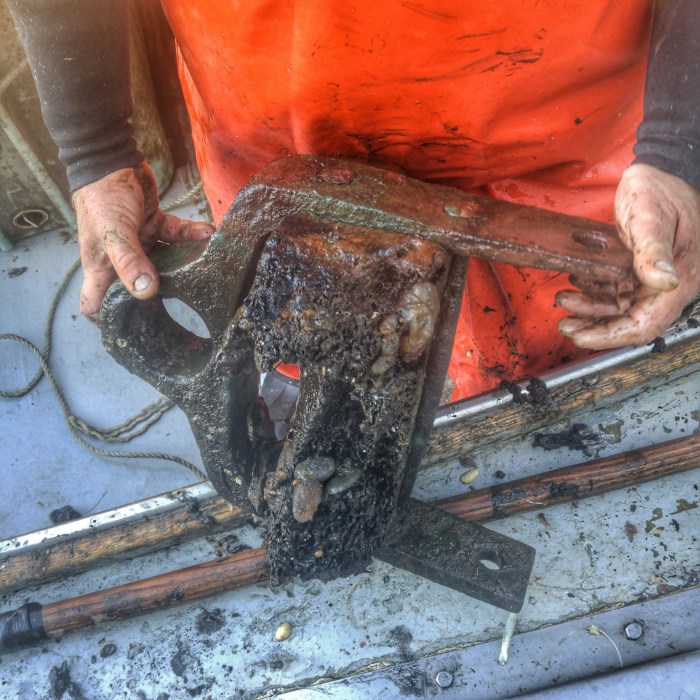

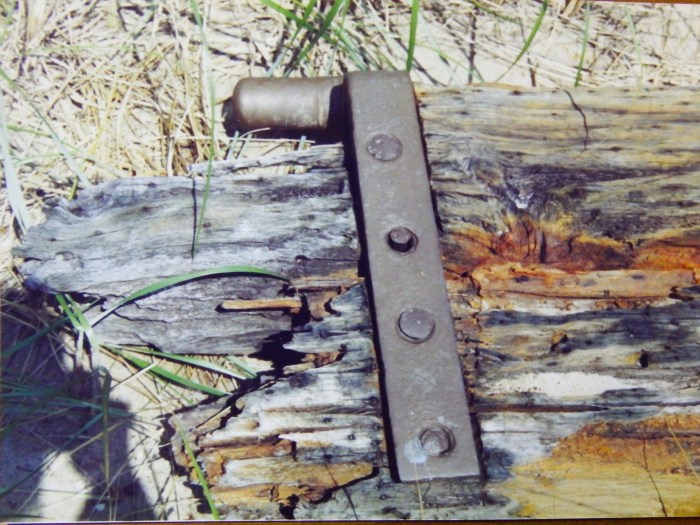

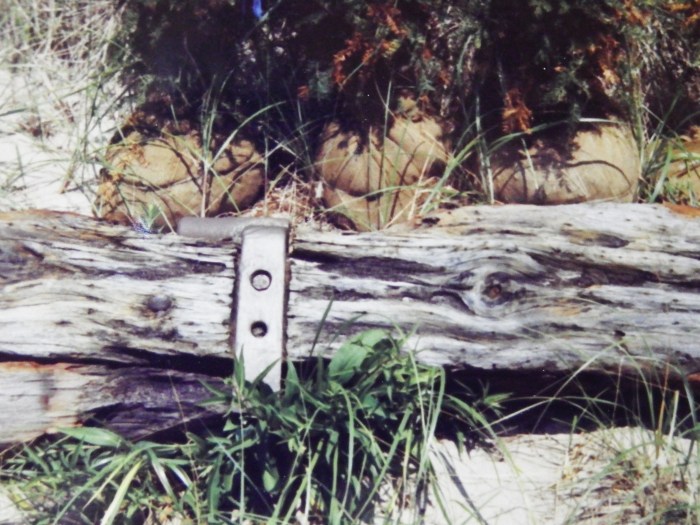
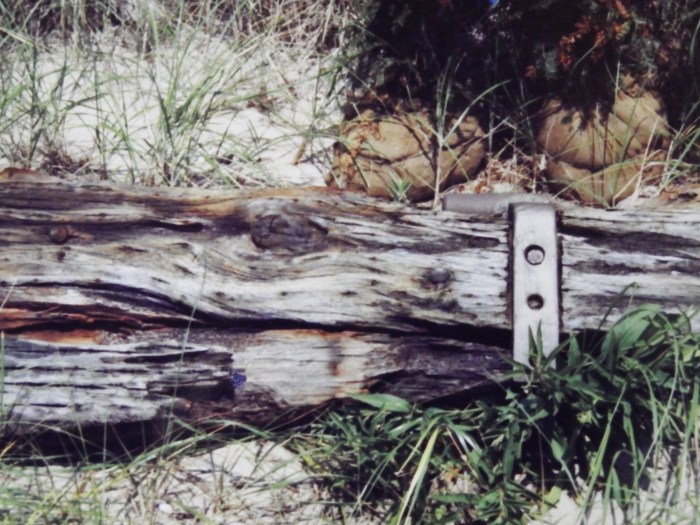

very interesting
LikeLike
Hopefully the schooner just lost the rudder and somehow made it home…
LikeLike
Well said Bill and this is quite a find all these years later things have a way of showing! Dave
LikeLike
Sweet find.
LikeLike